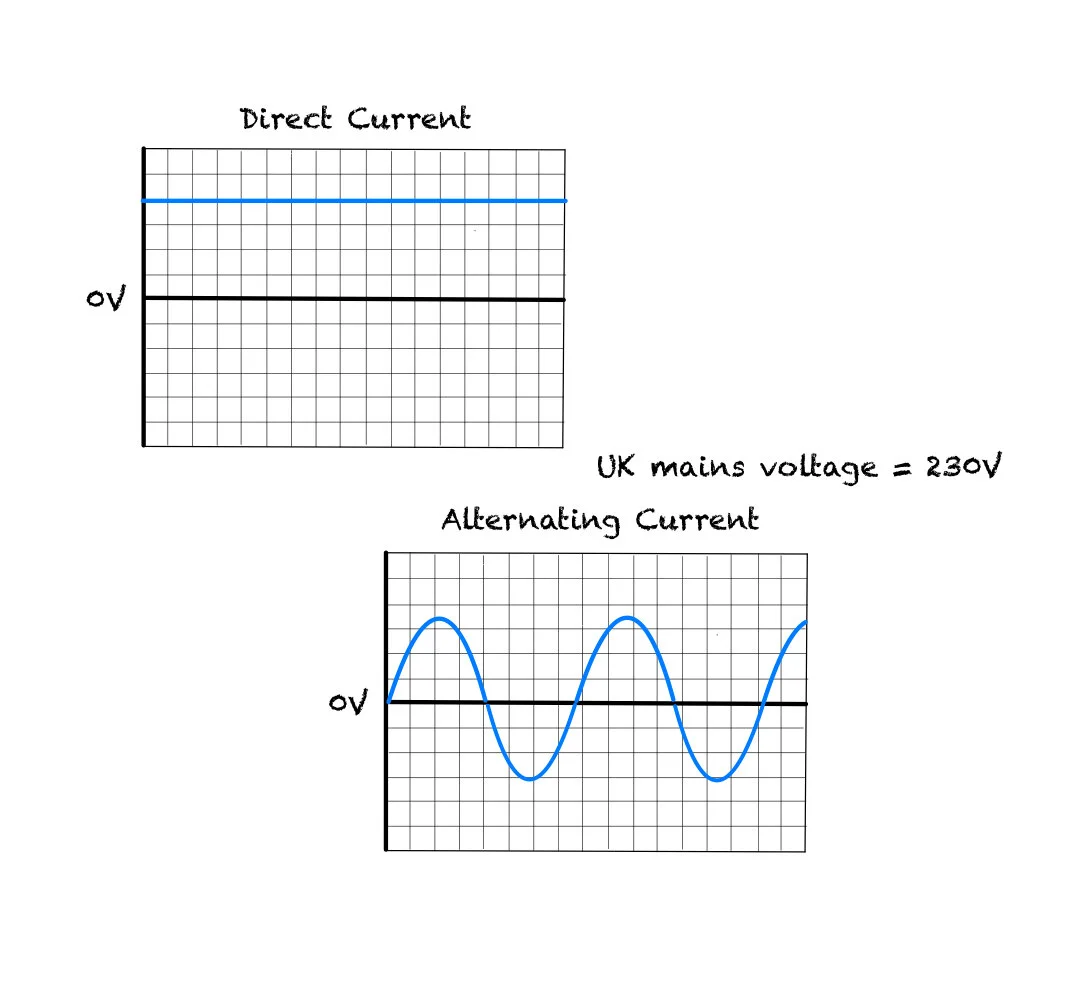Charge, Current and Voltage
We will start our unit of Electricity by introducing the idea of electrical charge and by learning some definitions.
Current is the flow of electrical charge in a circuit
An electrical conductor is a material that allows the flow of charge.
Voltage is the pressure from a power source in a circuit that pushes charge around the circuit. This is also called potential difference.
Electrical resistance is the opposition to the flow of current in a circuit.
Charge and Current Equation
The first equation of this unit helps with definitions. Again, you need to be able to rearrange this and apply it toe questions involving Charge, Current and Time.
Q = I x t
Q = Charge in Coulombs (C)
I = Current in Amperes (A)
t = Time in seconds (s)
Alternating and Direct Current
Direct current is a one-direction flow of current. Cells and batteries in circuits provide direct current.
Alternating current changes direction continuously over time. The UK mains supply is an example of alternating current.
The voltage of the UK mains supply is 230V.
Key Points!
-
Definitions
Be able to define and understand Voltage, Current and Resistance.
-
Charge and Current
Q = I x t
Be able to rearrange and use this equation.
-
Direct and Alternating Current
Direct current is a one-direction flow of current.
Alternating current changes direction continuously over time.
The voltage of the UK mains supply is 230V.


